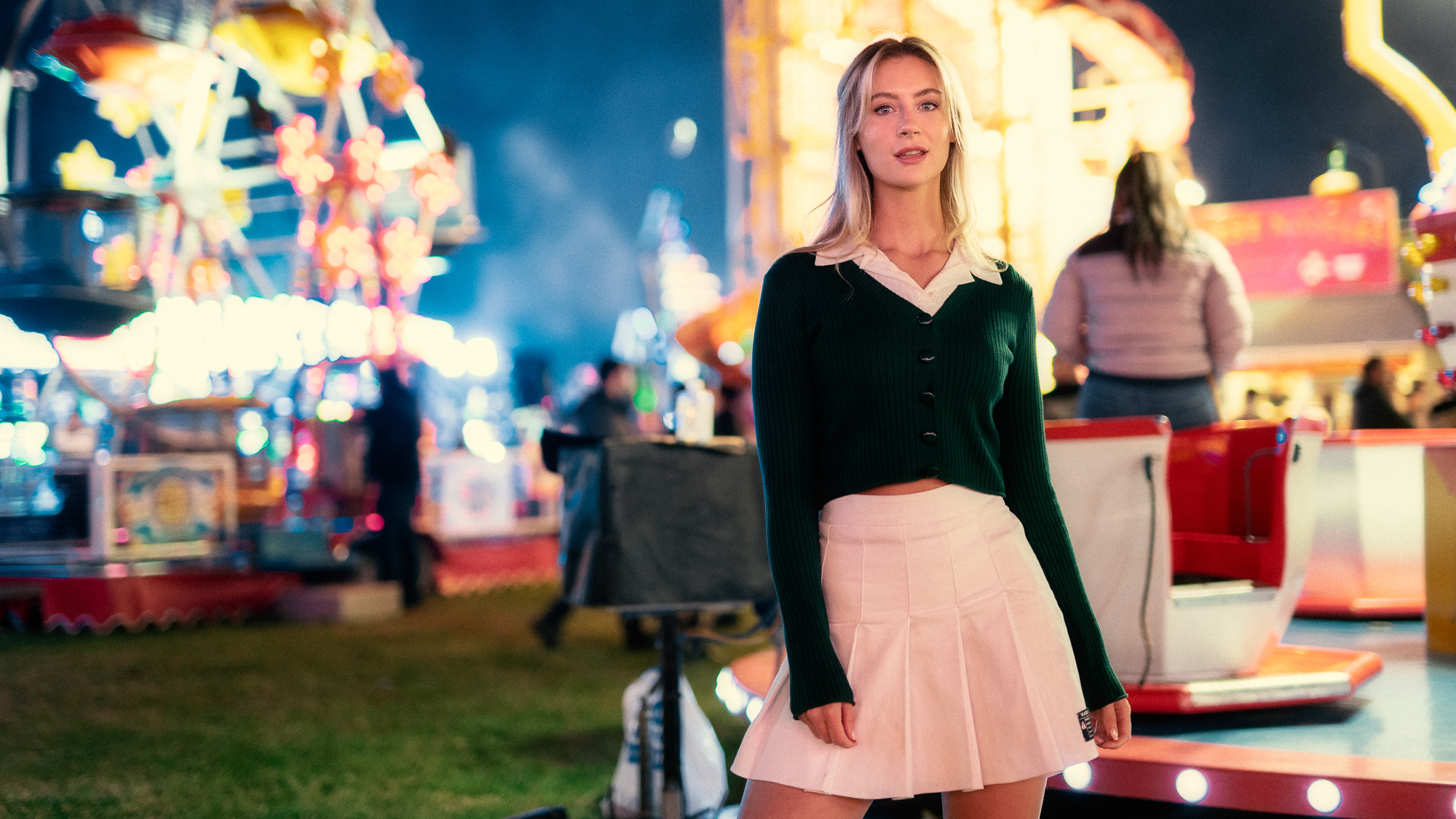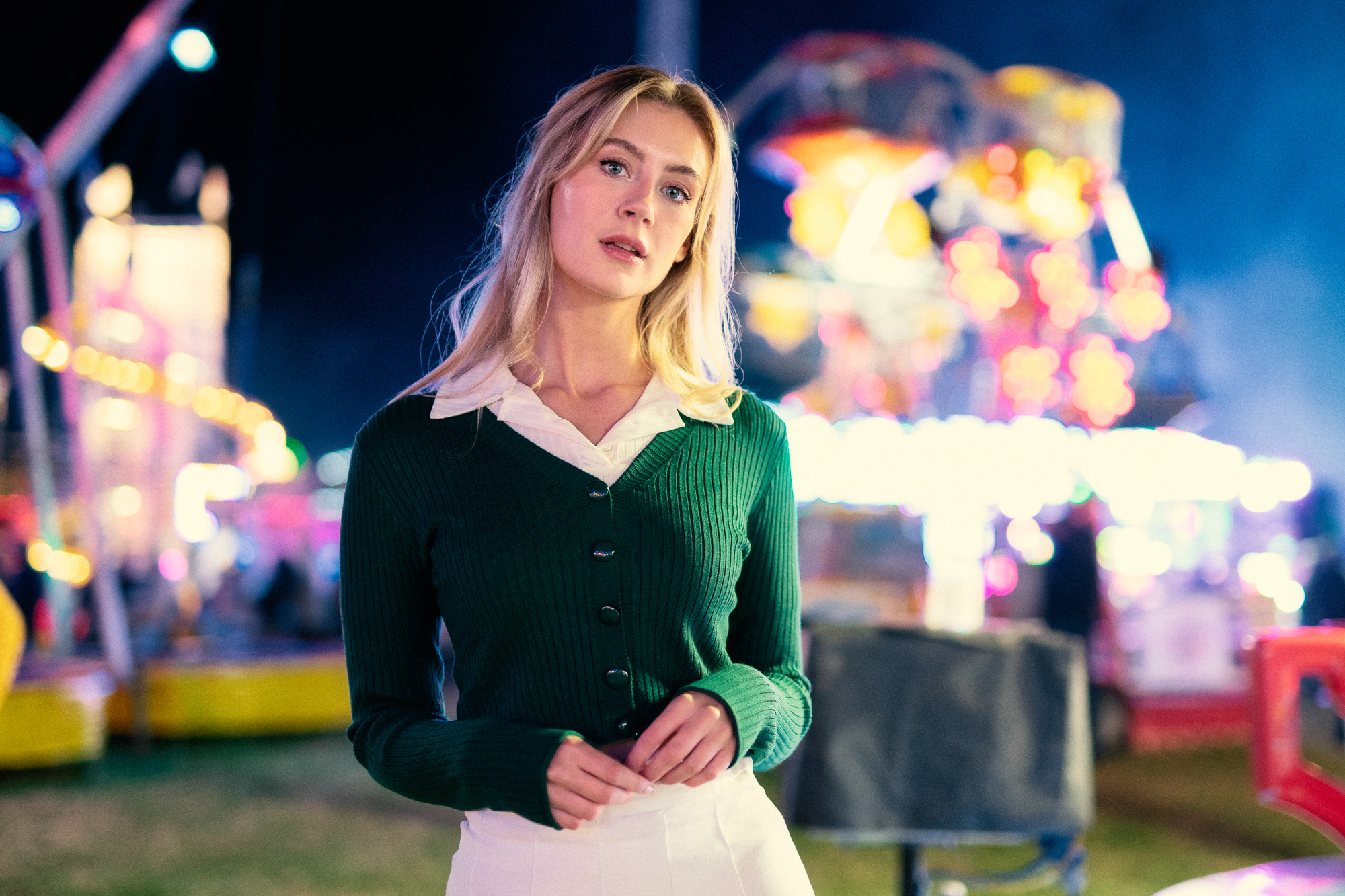How to shoot stunning portrait photos at a fairground after dark
Keith Eccles takes the opportunity to shoot eye-catching portraits while the fair is in town

Get more from your gear
• The best Sony A9 & Sony A9 II deals
• Best lenses for Sony A7iii
• The best low-light cameras in 2021
My love for both photography and videography is huge: they are the driving force behind most of my daily life. To be able to capture a moment or tell a story is the greatest opportunity to be creatively expressive, and the perfect way to develop my skills.
Video is my main source of income, while photo is more of a ‘hobby’ within my business. More and more now, though, people are being asked by clients to shoot both video and stills photography simultaneously – so if you’re a stills photographer, you might want to have a play with some video settings on your camera this winter. I like to get creative with my photos, and I love shooting portraits. Seeing ideas come to life as well as seeing the other person so happy is what gives me a big kick and drives my passion.
The fair has always been an iconic and memorable place for me. The change from going on the rides and seeing the lights as a child to now using it for business and landing clients is quite surreal.
This year I headed out with my Sony A7 III combined with my Sigma 50mm f/1.4 DG to put them both through their paces.
Keith's five top tips to shooting portraits at the fair
01 Scout your area for the prime spots
Before shooting, I like to scout my area and see what I am working with, and if anything catches my eye right away. A lot of the time, stuff happens on the fly, but it’s worth noting down areas you want to shoot in beforehand. I had been to this fair before and it is usually the same setup, so I was already ahead with ideas.
02 Boost your lighting if you need to.
The best camera deals, reviews, product advice, and unmissable photography news, direct to your inbox!
I tend to shoot most of my photos with natural light, but here I mostly used the lights from the fair as my main source, with just a little occasional help from a portable light. If these lights were not available, I would have brought along my own lights: either my Nanlite Forza 60B and a softbox to light the model’s face, or some Nanlite Pavotubes, for some cool coloured lights to match the fair’s ambient light.
03 Have a shared vision
When you work with models, it is not just your vision: you are working as a team and they may have great ideas, too. Listen to them and try things out. It is better to try a shot than not do it at all. Show the model some frames after you have taken them so they can get a feel of what you are trying to achieve: it will make them feel a lot more comfortable and involved, so you all have a great time.
04 Try shooting with facial recognition
Many cameras have some form of facial recognition these days, which helps a lot in low light to keep that pinpoint focus and sharpness. If the light is pretty dark, though, it doesn’t always work; so this is where I would switch to Manual and focus where I would like, using the focus peaking system that you’ll find in many modern cameras.
05 Shoot wide open for the most light and shallow focussed subject
With low-light photography I like to shoot at the widest aperture I can; with my Sigma 50mm, that’s f/1.4. This allows me to get extra light into the camera to get a better, cleaner image, but also blurs out the background to give me that cinematic bokeh. It will also help with blurring out unwanted people in the background, and really draw one’s eyes towards the model.
See more of Keith's work via his Instagram @keefikus
(Model: @hazelcathrin)
Read more:
• This is why I switched from a Fujifilm X-T3 to a Sony A7 III
The sister print publication to this website, Digital Camera Magazine is Britain's best-selling photography publication – and it can also be purchased outside the United Kingdom as Digital Camera World.
Digital Camera Magazine is packed with more expert advice and more inspirational images than any other title, with the sole aim of helping you become a better photographer. Every issue we also bring you a selection of great gifts which are designed to help you get more from your photography – everything from tips cards and cheat sheets to free software and bookazines.
In addition to inspirational images, interviews, projects, mini tests and tutorials, each issue is packed with news, reviews and comparisons, as well as photographer vs photographer shootouts and head-to-head challenges using the best photo editing software.
The magazine is captained by Editor Niall Hampton.







